Fox Speedframe Helmets
MSRP:
- Speedframe: $110
- Speedframe Pro: $200
- Speedframe RS: $280
Version Tested: Speedframe Pro
Size Tested: Large
Blister’s Measured Weight: 401 g (Speedframe Pro, Size Large)
Test Location: Washington
Test Duration: 2.5 months
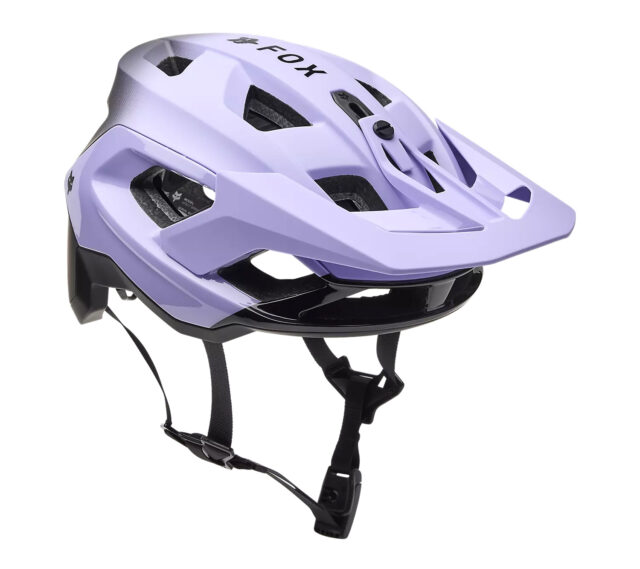
Intro
With solid safety rankings and some nice finishing details, Fox’s Speedframe lineup has earned a lot of fans — our crew at Blister included. I liked the prior-gen Speedframe Pro a lot when I reviewed it some years back, but now there’s a new one. So has Fox messed with a winning recipe too much, or refined an already-good helmet into something even better? I’ve spent the last several months testing the new Speedframe Pro and have some thoughts.

Design & Features
There are now three versions of the Speedframe — the Speedframe, Speedframe Pro (tested), and Speedframe RS. All three share the same silhouette, which hasn’t changed too dramatically compared to the prior-gen version, but differ in the details and feature sets.
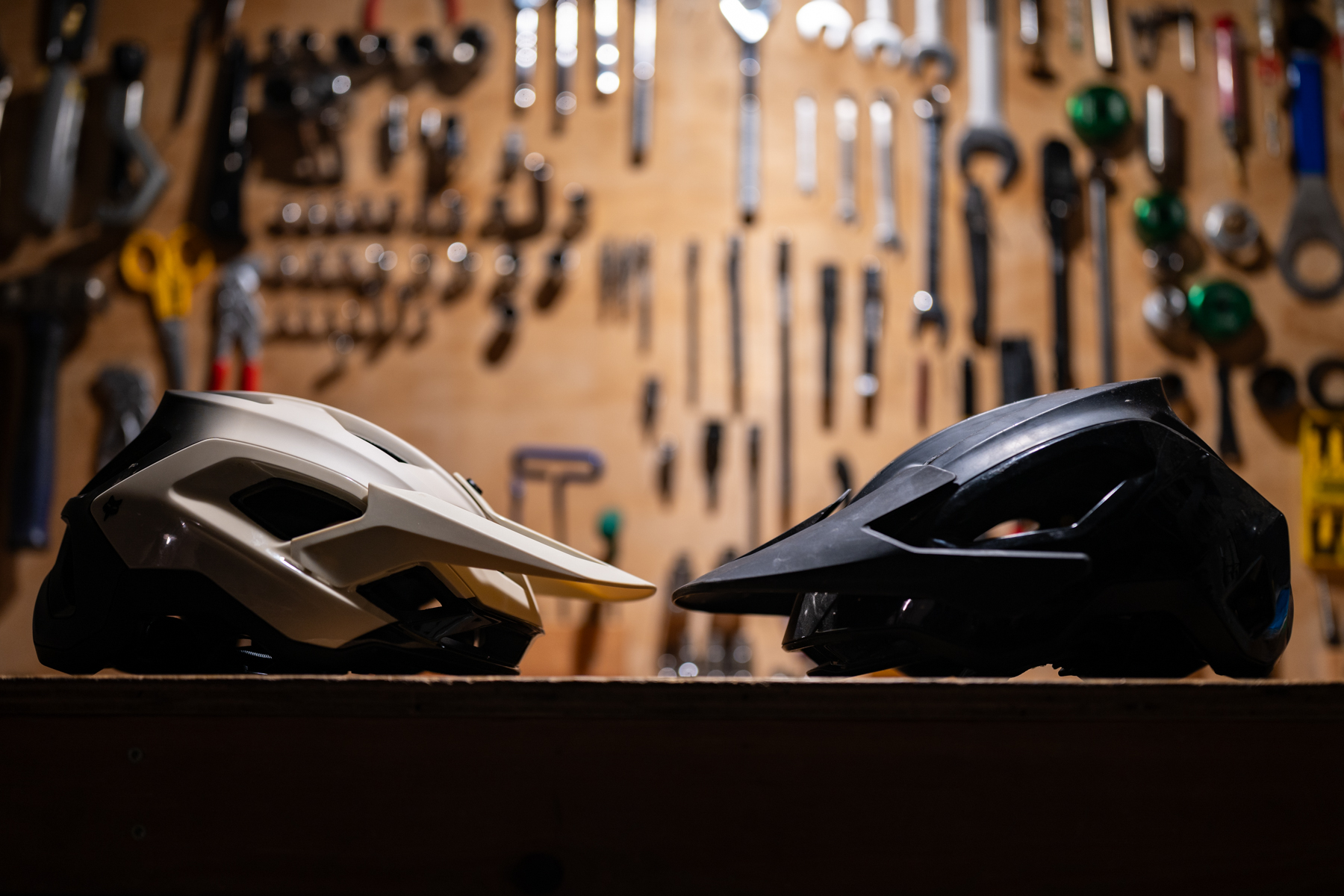
Speedframe
The base Speedframe is by far the most affordable option in the lineup at $110, and while it’s not as fully featured as the higher-end variants, it’s not entirely bare-bones, either. The Speedframe uses the same silhouette, headform, and vent layout as the pricier models but with a more basic (and quite conventional) in-molded EPS shell. The Speedframe gets a MIPS liner to help reduce twisting forces being applied to the wearer’s head in the event of a crash, a removable and washable inner liner, a standard dial-based adjustment system, and a standard buckle closure. The visor is adjustable with three different height settings, and a screw at the center of the visor can be used to adjust the tension on the detents, including making them very firm if you want to make sure it stays put. The screw is plastic and intended to break away if needed.
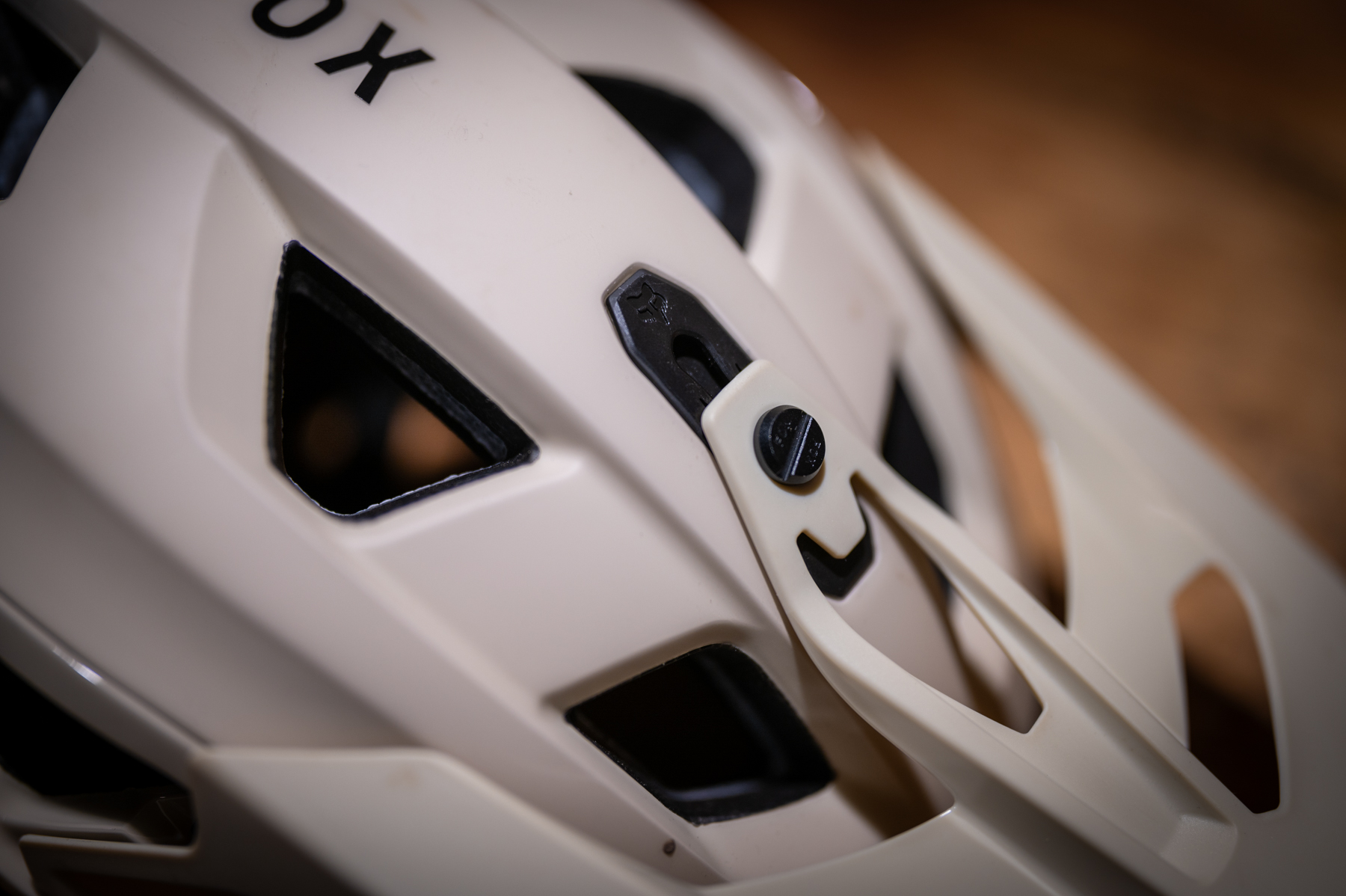
Like the higher-end variants, the Speedframe has built-in glasses storage, using a pair of rubber grippers under the corners of the visor to secure the glasses’ arms underneath the visor. The Speedframe is ranked #137 in Virginia Tech’s helmet testing with a score of 13.39 (lower is better), which places it around mid-pack of all the helmets they’ve tested, but still good enough for a five-star rating.
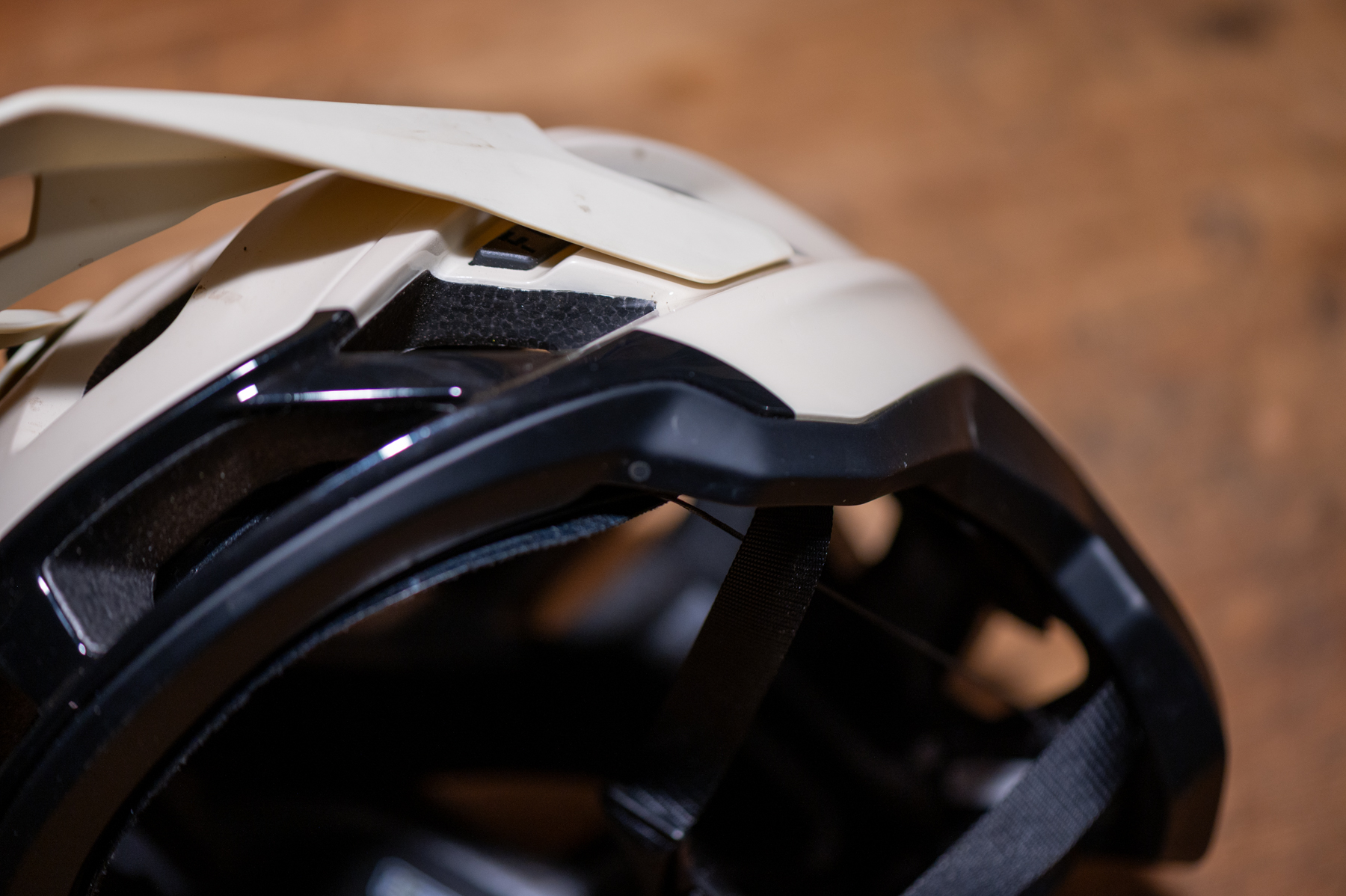
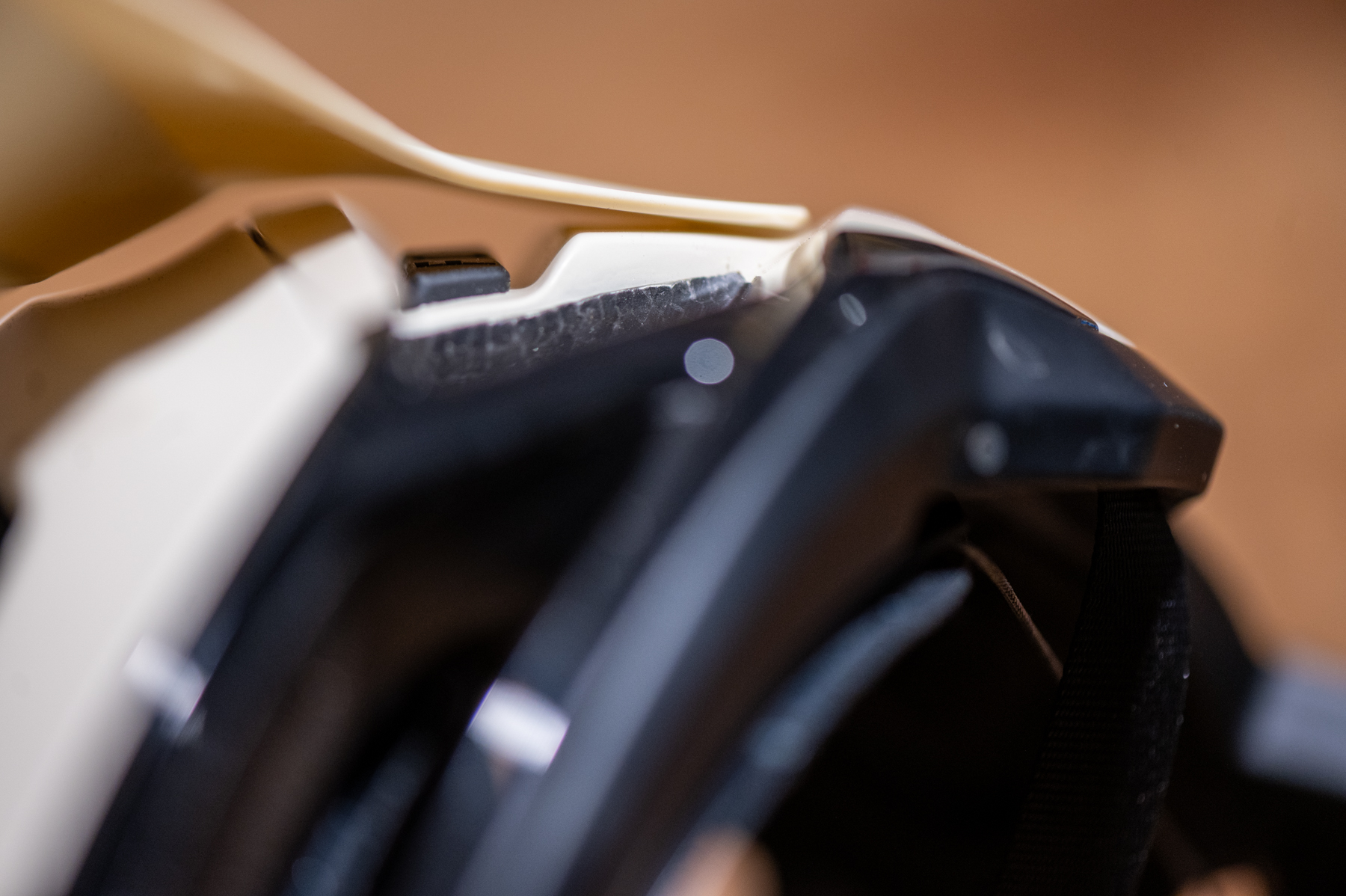
Speedframe Pro
The Speedframe Pro that I’ve been testing costs nearly double what the base Speedframe runs at $200, but gets a bunch of extra features for the additional cost. Maybe the most significant is the switch to a dual-density EPS shell, which uses a mix of softer and harder foam in strategic locations to improve the Speedframe Pro’s impact protection. The Speedframe Pro also gets a fancier MIPS Air Node liner, which does away with the plastic shell of the more basic MIPS system in the Speedframe. I haven’t gotten my hands on the standard Speedframe to compare, but I’ve found most other plastic shell-based MIPS systems (including the one used in the prior-gen Speedframe Pro) to make a bit of noise and induce some noticeable movement between the helmet shell and the MIPS liner. That’s gone in the new Speedframe Pro.
Between the dual-density shell and upgraded MIPS liner, the Speedframe Pro vaults way up the Virginia Tech safety rankings to the #2 spot with a score of 8.10.
The Speedframe Pro also uses a BOA retention system, which still uses a dial at the back of the helmet, but uses a flexible cable instead of a more conventional semi-rigid plastic retention system. There’s still a plastic cradle at the rear of the helmet, but the BOA cable is the only part that extends to the front of the helmet. The Speedframe Pro also gets a Fidlock magnetic buckle for the chin strap. The glasses storage solution and adjustable visor carry over from the Speedframe.
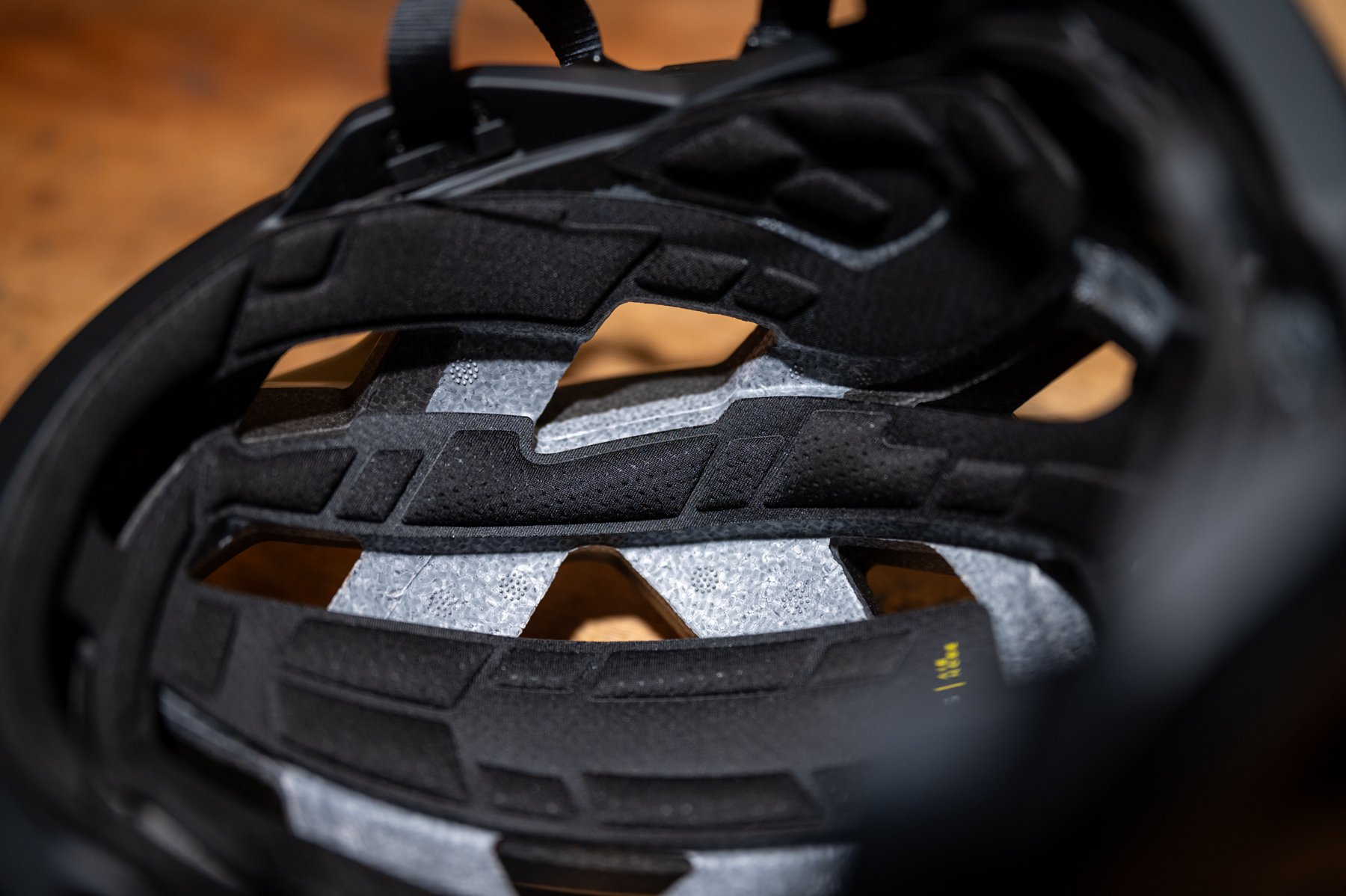
Speedframe RS
The Speedframe RS uses the same silhouette and vent layout as the less expensive versions but gets yet another shell design. The Speedframe RS gets a MIPS Integra Split shell, which uses two separate layers of EPS foam with elastomers tying them together so that the rotational slip of the MIPS system happens between the inner and outer shells instead of against the wearer’s head.
That change makes the Speedframe RS the only bike helmet to get a better safety rating from Virginia Tech than the new Speedframe Pro, with a score of 7.23.
The Speedframe RS also adds an Iconic+ anti-microbial liner. Otherwise, the feature set of the Speedframe RS is shared with the Speedframe Pro.
Fit
Fox says that the new Speedframes use the same head form as the outgoing ones, and while I have no reason to doubt them on that point, the fit of the new Speedframe Pro feels a little different than that of the prior version — I think due to their different retention systems.
The Speedframe shell is a bit more round (i.e., wider) than it needs to be for my fairly oval-shaped head. The prior-gen Speedframe Pro still worked well for me despite not being as precisely tailored to my head shape as it could have been; the new one feels just a bit less secure side-to-side, I think because the more flexible BOA retention system simply doesn’t snug the sides of the helmet down as firmly as the stiffer plastic cradle on the prior-gen Speedframe Pro.
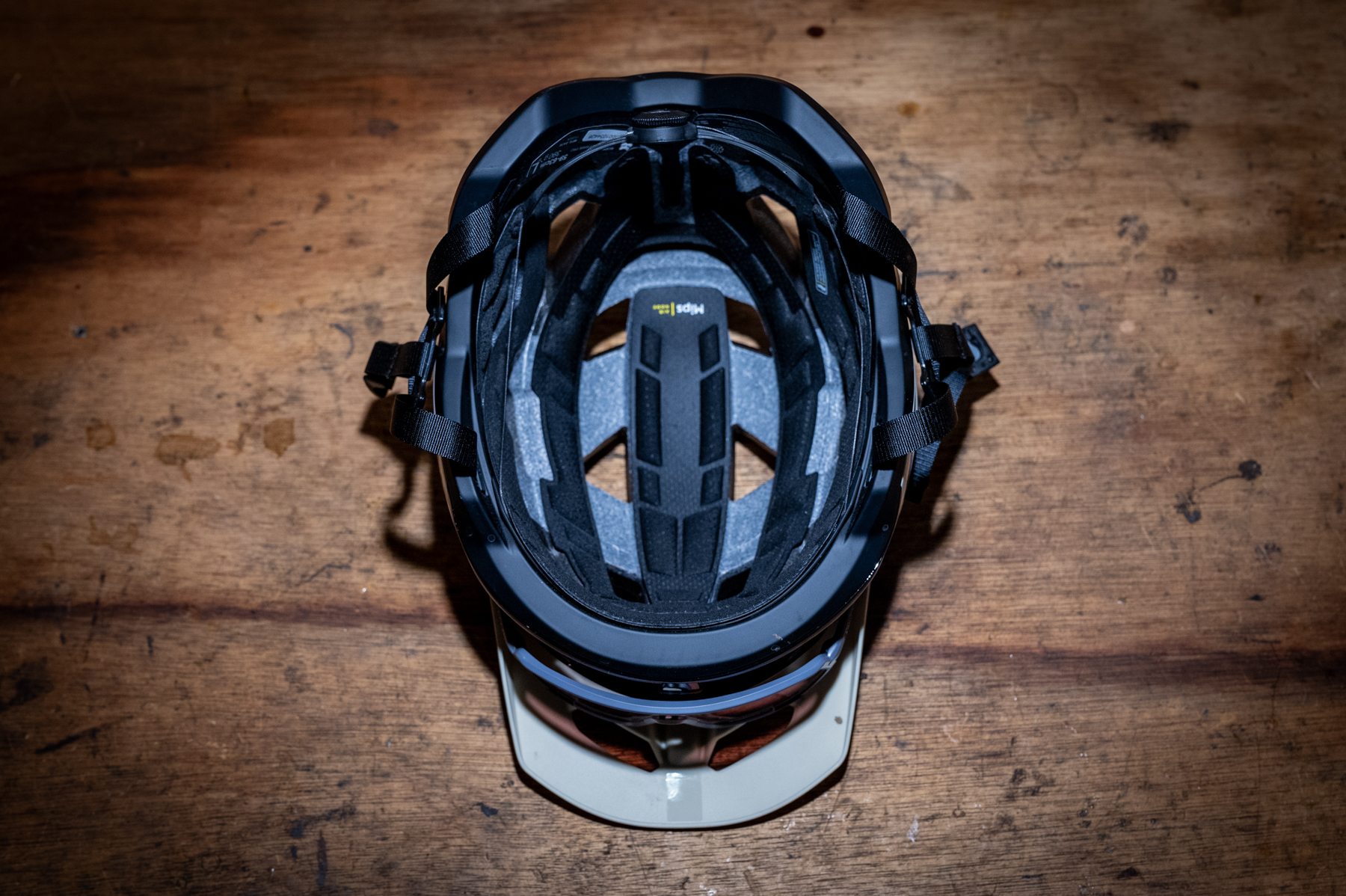
The good news is that a lot of that sensation goes away once I actually start riding in the new Speedframe Pro. When I first tried it on I was worried that the fit was not going to work for me, but in practice, it’s been fine. The prior-gen Speedframe Pro feels a little more stable on my head than the new one — by a lot when first trying it on, and a little bit out on the trail — but the BOA retention system on the updated version doesn’t need to feel as snug as a more rigid plastic cradle to get the job done.
If the prior-gen Speedframe fits you well, I bet that the new one will too. If, like me, the Speedframe head form is wider than your head, the BOA system doesn’t squeeze the sides of the helmet down as effectively as the retention system on the older version. As always, we’d recommend trying on a helmet before buying sight unseen, and of course, my head isn’t yours. In general, I think the Speedframe family is likely to work best for folks with moderately round heads rather than super oval ones.
On The Trail
The slightly less-than-perfect fit for my head notwithstanding, I’ve found the new Speedframe Pro to be quite comfortable on the trail. The MIPS Air Node system is quiet and doesn’t produce the sensation of the shell moving against your head nearly as much as more basic MIPS systems; the strap arrangement is tidy, and I’m a particularly big fan of Fox’s plastic spreaders that separate the front and rear straps below your ear; and at least on my head, the Speedframe Pro offers quite good coverage in terms of both the shell itself and the visor, without coming into my field of view appreciably.

For its fairly broad coverage, the prior-gen Speedframe Pro was still one of the best-ventilated higher-coverage helmets I’ve tried to date. Since I’ve been testing the new one in the depths of winter, it’s a little harder to assess its ventilation, but it does feel a notch cooler than a couple of the other helmets I’ve been wearing of late (chiefly the Lazer Coyote Kineticore and POC Kortal Race MIPS). The new Speedframe Pro feels close enough to the old one in terms of ventilation that I don’t feel confident in comparing the two directly given the cool-weather testing I’ve been doing, but I’m comfortable saying that it’s still notably breezy for what it is.
The glasses storage system on the new Speedframe Pro does a great job of holding glasses securely, almost to a fault — it’s not the easiest to take glasses in and out of while on the go. That’s certainly preferable to having them fall out, though.
I tend not to wear glasses very often here in Western Washington, for a couple of reasons: (1) the vast majority of my riding is under heavy tree cover so I’ve got little use for tinted lenses here, and (2) it’s often very wet and humid here, making it hard to keep glasses clear. Storing glasses on a helmet tends to be especially tricky on that second point, between them getting rained on / sprayed from tires and getting fogged from humidity and sweat. The forward placement of the Speedframe Pro’s storage works much better for me than helmets that place the glasses at the rear of the helmet, and between the Speedframe Pro’s visor coverage and notably good airflow, I’ve had fewer issues with fogging than I often do on other helmets.
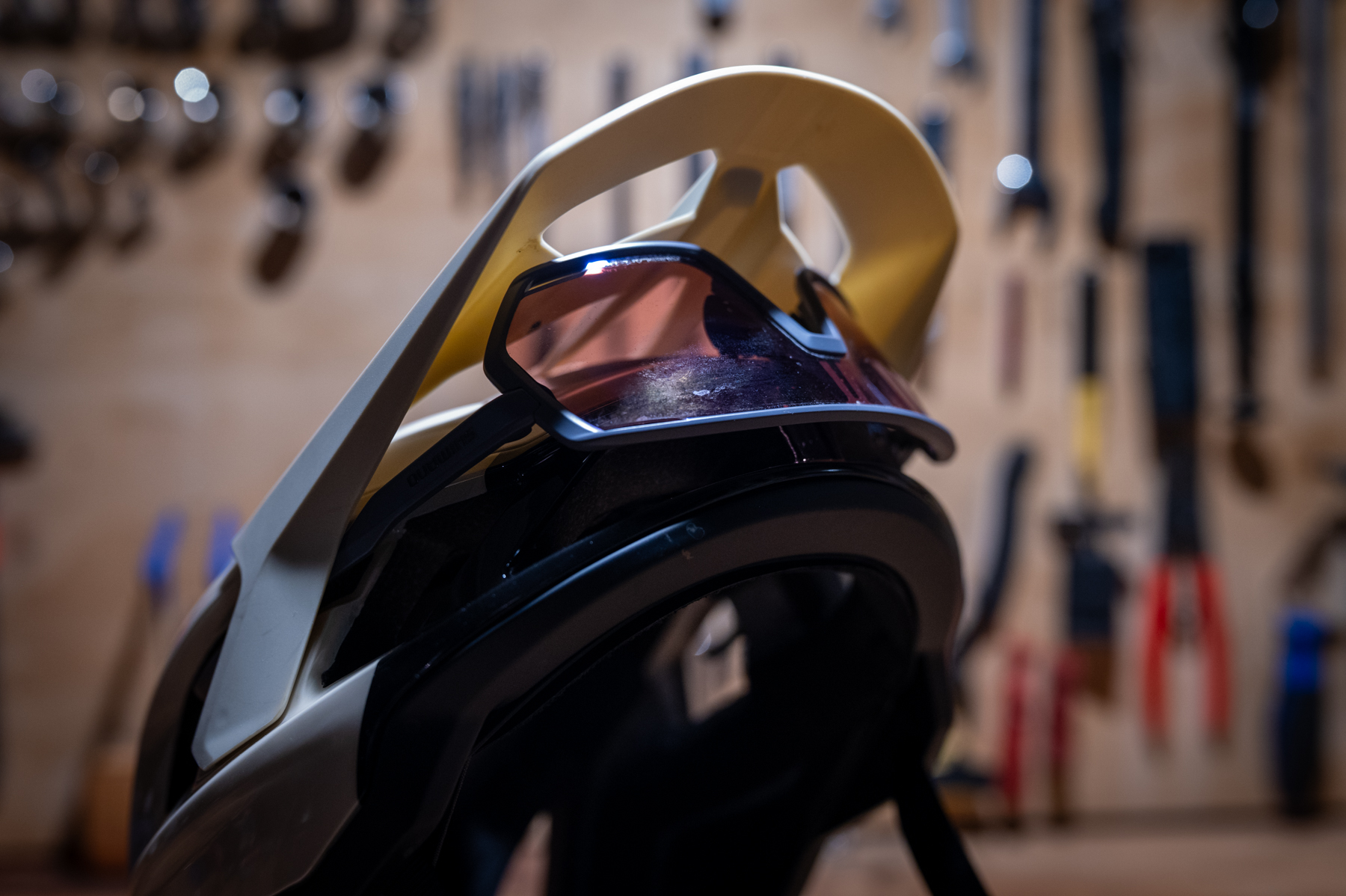
Bottom Line
The new Fox Speedframe Pro is a well-ventilated, high-coverage half-shell helmet with a number of nice updates over the prior-generation version, including a more secure visor, the addition of glasses storage, and an upgraded MIPS system that is quieter and more comfortable than the older one. On top of that, it’s one of the best-rated helmets out there in Virginia Tech’s safety testing. If the fit works for you — and I suspect that folks with rounder heads will fare better than those with really oval ones — it’s a compelling option.

Nice review. I had the prior version and liked a lot about it, but the irritating plastic MIPs liner and thin brow padding made it a no-go.
It’s great they addressed both of these things, though I’d LOVE to see a hi-viz color available.
Thanks! And yeah, they did a nice job of addressing a lot of the details that had room for improvement.
My hunch is that the brow padding still isn’t best-in-class from a sweat absorption standpoint, but it’s definitely better than on the old one. I’ll have a better idea once things warm up in the spring.
I bought a Large RS for myself and a Medium Pro for my wife. The sunglasses retention is vastly different between the two.
On the medium everything works as expected, I’d say it’s a good setup.
On the large, however, my same glasses (I’ve tried Sutro and Holbrook on both) barely stay on, to the point of actively ejecting off of the helmet. I’m not sure if it’s because of a wider shell for the RS liner, or just the larger size, but the arms of the glasses barely make contact with the pads there to retain them. I can’t see that I will ever be able to stow my glasses on the helmet, which is a real bummer.
David, I’m a definite oval-head and got the same impression when I tried on an updated Speedframe Pro compared to my prior Speedframe version. Any suggestions for alternative mtb helmets to try on with similar protection & features as the new Speedframe Pro, but might better suite my noggin’s shape?
Neither is a perfect 1:1 match for the fit of the old Speedframe Pro, but I’d look at the POC Kortal Race Mips and the Lazer Coyote Kineticore. The Coyote, in particular, fits my oval head really, really well.